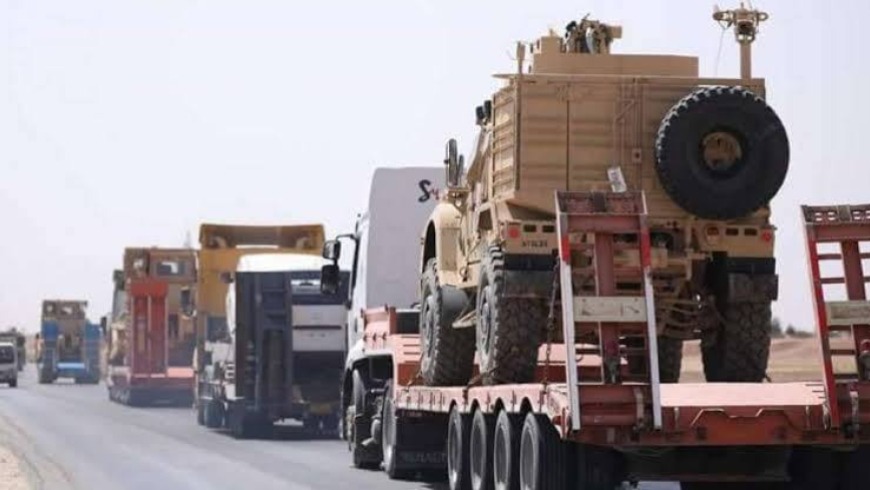The local network “al-Khabour” reported on Saturday that a convoy comprising weapons and logistical equipment belonging to the international coalition forces had entered the areas controlled by the Syrian Democratic Forces (SDF) in Hassakeh and Deir-ez-Zor.
According to the network, the convoy, which consisted of 40 trucks and tankers, arrived in Syria via the al-Waleed crossing near the town of al-Yarubiyah, originating from northern Iraq.
The network confirmed that the convoy included military equipment, trucks carrying logistical materials, as well as concrete bridges and fuel tankers.
The convoy was observed heading towards the bases of the international coalition forces located in Hassakeh, specifically Rmeilan, Al-Shadadi, and Tal Baydar. Another section of the convoy proceeded towards Deir-ez-Zor.
On the same day, Ian Makari, the deputy U.S. special envoy for the “international coalition,” expressed serious concern over the camps for displaced people in northeastern Syria. He emphasized that the international coalition is collaborating with countries to enhance their capabilities in combating ISIS and preventing its resurgence.
In remarks reported by Asharq Al-Awsat, the U.S. official refuted that the war against the Islamic State had concluded, stating that although the group is “weaker and less militant” than it was 5 or 10 years ago.
“The coalition’s mission in Syria has a specific and limited scope,” he explained. “Its goal is to collaborate with local partners on the ground to ensure security and facilitate the recovery of communities devastated during the group’s control.” He further highlighted that the 85-nation international coalition is actively collaborating with countries to enhance their capabilities in countering ISIS and preventing its resurgence.
Makari emphasized that one of the key themes of the upcoming ministerial meeting of the “international coalition” on June 8 is to bolster the ongoing international efforts to implement stabilization projects. These projects aim to rehabilitate and reintegrate individuals stranded in camps within affected communities and assist displaced people in northeastern Syria.
This article was translated and edited by The Syrian Observer. The Syrian Observer has not verified the content of this story. Responsibility for the information and views set out in this article lies entirely with the author.


